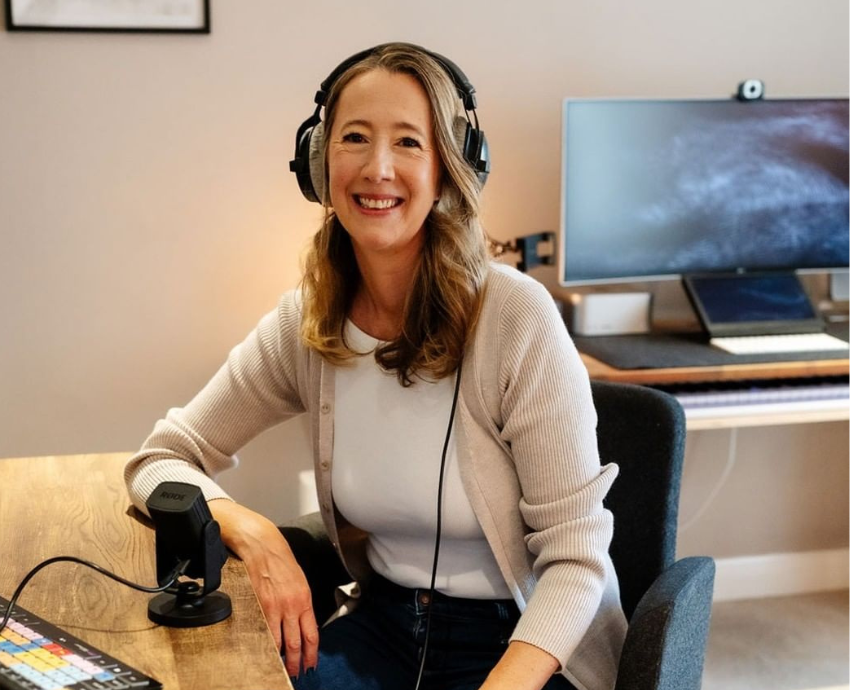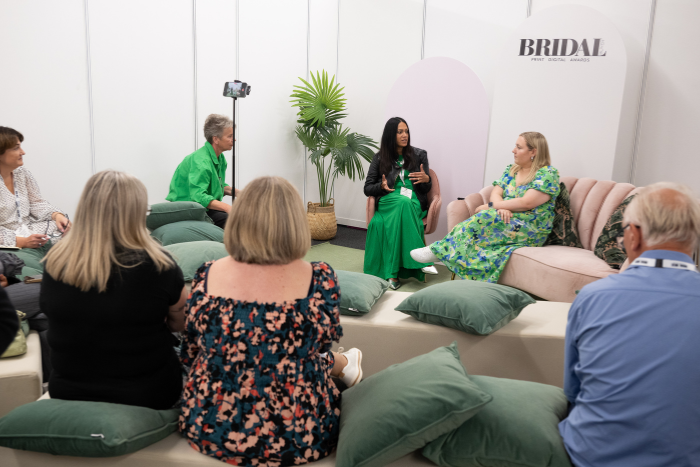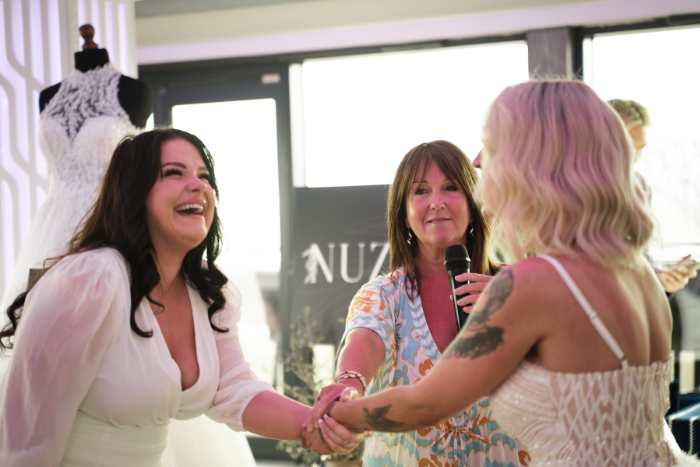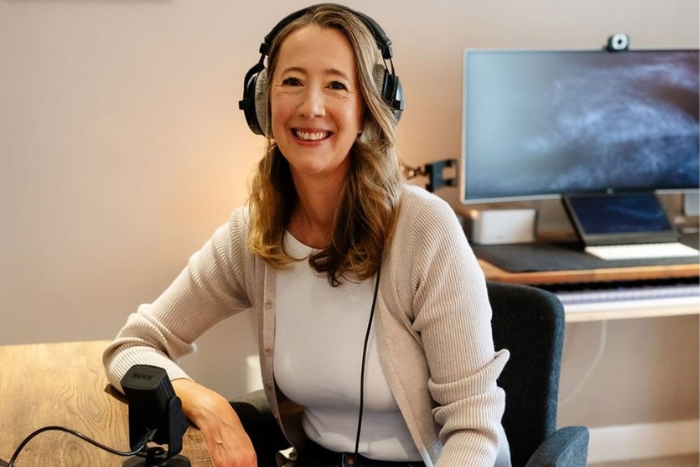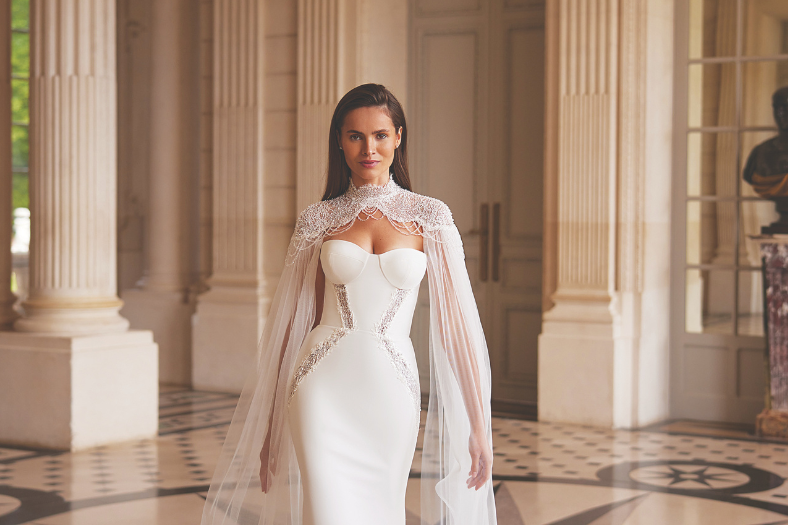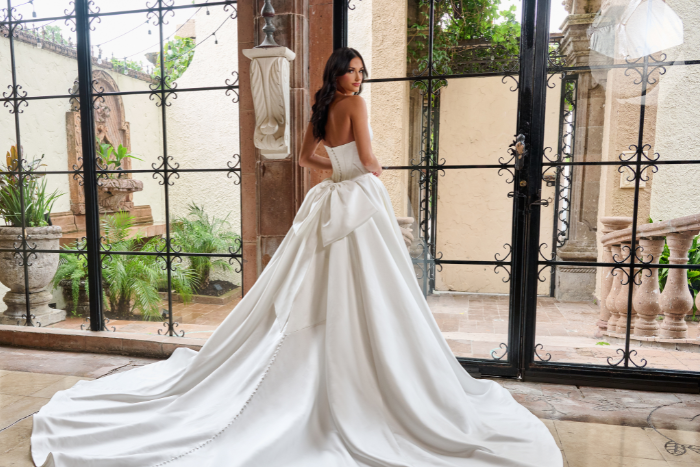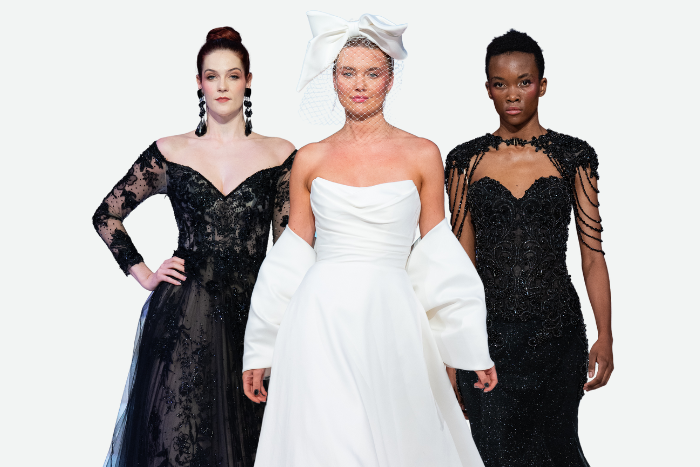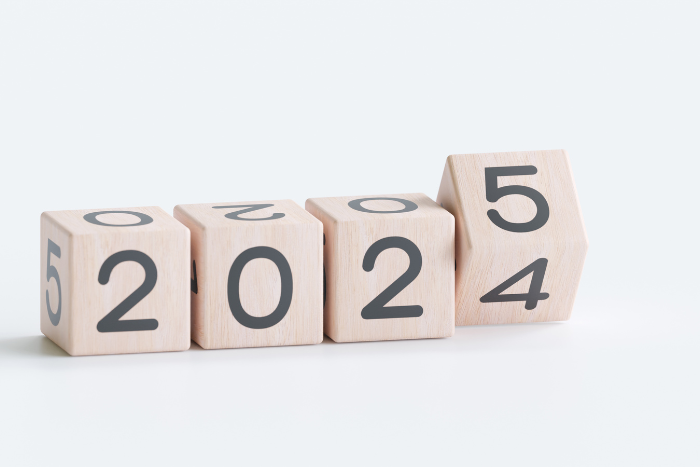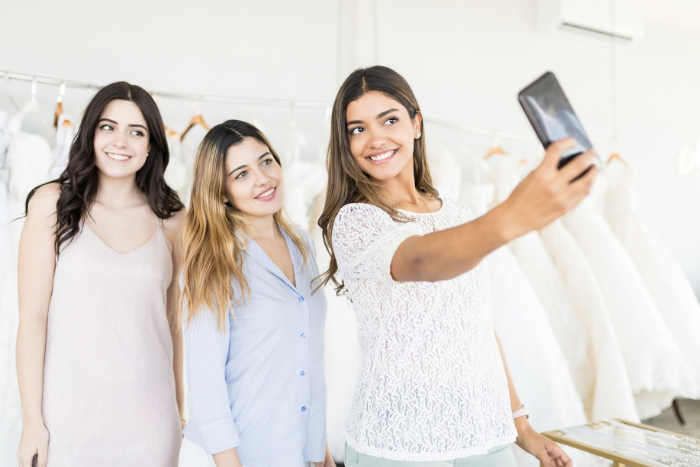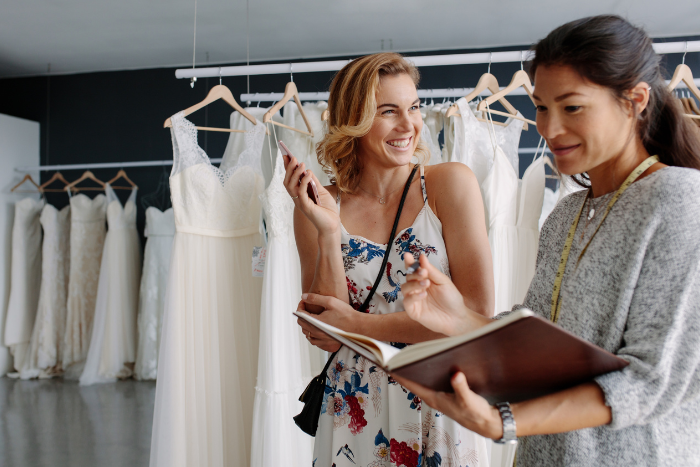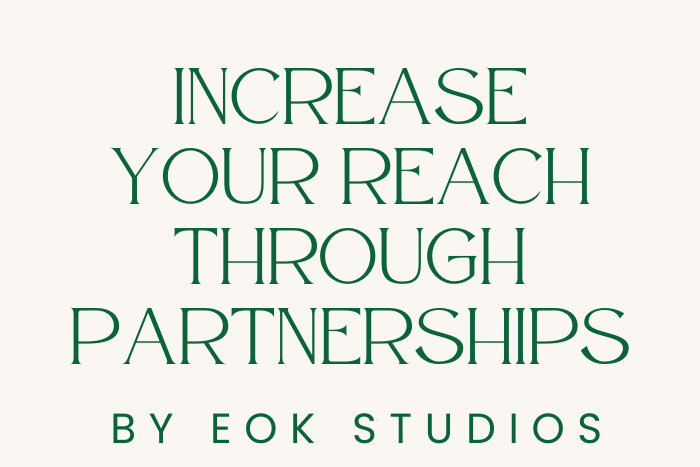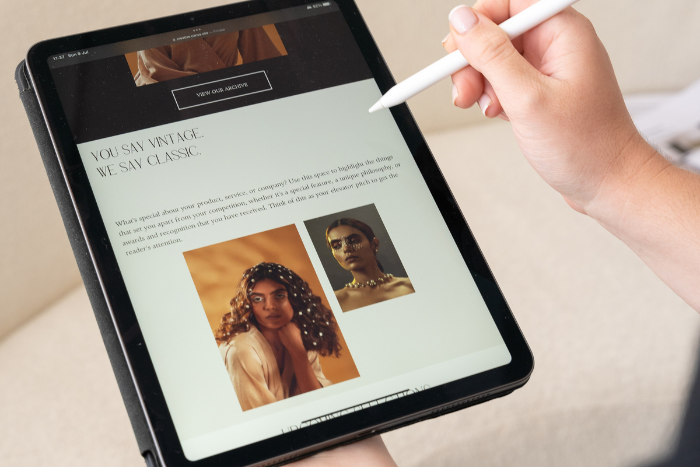How to use storytelling to build a more eco-conscious brand
Designer, author and conscious fashion advocate Caroline Arthur shares her insights on her new book, Relovable, and her captivating Bridal Buyer Lounge Session conversations on all things sustainability and repurpose.
It felt like there was a whole lot of love in the air at Harrogate this year. We all needed some respite from the challenges in our industry, over a much-needed glass of bubbly, and everywhere you turned, there were hugs and heartfelt exchanges of news - both bridal and personal. Behind closed doors, surrounded by beauty, the sense that we’re all in it together was palpable, as partnerships deepened and friendships flourished.
The Bridal Buyer Lounge Sessions sat at the heart of it all. Authentic and honest, these talks with Anna-Marie were live and unscripted. I was invited as a guest speaker to talk about circularity within the bridal industry, the subject of my new book, Relovable. A few seconds before the session started, we decided to just dive in and start by sharing our own real stories, offering a fresh take on how we can all tackle this intimidating problem.
It’s on all our minds that there are aspects of the wedding industry which aren’t sustainable, and the finger is often pointed at the single-use issue – one of the topics that I address in the book. Brides are increasingly asking about the ethical credentials of their dress – how it was made and what it’s made from. We don’t need to shy away from talking about this, even if we don’t feel like an expert on the subject. What happens to a wedding dress AFTER it is worn is as important as where it came from and how it was made.
Anna-Marie shared her own wedding dress re-use story with us - not a typical bride, she actually felt a bit scared of bridal shopping. Her mum had handmade her own wedding dress and Anna-Marie would have loved to wear that, but the lace was so yellowed after so long in the loft, that she ended up wearing a different pre-loved vintage dress and since then it’s been tucked away for 15 years. One day, she’s hoping her daughter will want to dress up in it, or maybe even dream of using it. I admitted mine had also been tucked away in the wardrobe for 25 years, but I got it out when I started writing the book and now it sits on a mannequin in my sewing room where I can enjoy it every day.
What we can all take from this is the effect on our well-being that a wedding dress can have, and the need in each of us to share stories about it.
Stories connect us to each other as well as to our own personal history, and story-telling can build a powerful emotional connection with our brides, as you’ve no doubt noticed if you ever share your own story with them. “What did you do with your old wedding dress?” is an easy way to you broach the subject of cost per wear, particularly when directed to the bride’s mum or sister if they’re with the bride – they’ll want to tell you about their dresses or experience and it all sows a seed in the bride’s mind.
From there, it’s easy to move on to talking about potential re-use of the dress, and to exchange ideas. If you’re stuck, you can use your copy of Relovable as a convenient tool to inspire your bride, and really get them thinking about what they can do with the dress after the wedding. As they do this, they’ll feel increasingly settled, they’ll be able to visualise it in their life going forward and leave confident that they’ve found The One.
During our lounge session, we talked about how to choose collections consciously, and ask designers about their production processes so you can assess their transparency and the credentials of the fabrics they use. Some designers are already using natural, recycled or sustainably sourced fabrics, but simply by asking these questions, you’re having an influence on the future by showing that demand for ethical production is there.
We talked about starting to phase out polyesters and how this fabric takes 200 years to biodegrade. You can’t dye dresses made from it with natural dye, but you can paint them or use a synthetic dye, and we can encourage other ways of re-using it after the wedding. We can also start introducing gowns into our collections that are made from natural or sustainably sourced fibres. When you chat with your designers and labels, ask about production methods and tips about repurposing. They’re designers and this subject will be on their minds too, so they will be full of ideas.
Often, brides ask about dyeing their dress after the wedding. To offer advice, you don’t need to understand every nuance of how to dye a wedding dress in order to wear it again, nor do you need to take on the risk of recommending someone do it. This is a specialist subject and there’s plenty of guidance in my book and online. At point of sale, the aim is just to sow the seed of potential use, if a bride is wavering over the cost per wear, and signpost her towards resources she might need.
TOP TIPS FOR BECOMING A MORE ECO-CONSCIOUS BRAND
• COLOUR – Use a colour change app on your phone to demonstrate to a bride how her dress might look in a different colour. This can be a fun element to introduce into the dress shopping experience and an accessible way to open the conversation about re-use. Learn a bit about dyeing and restyling so you can speak with confidence. You only need to know a little bit more than the bride – you don’t need to know everything.
• CONSTRUCTION - Check out the construction of the gowns in your collection - look for a horizontal seam at the waist – could you visualise this as a skirt? Could the leftover beaded bodice be repurposed as a clutch bag?
• LAYERS - Rifle through the layers in each dress and consider each one in isolation – are there contenders in there that could be removed after the wedding day either used alone as a skirt, or to reduce the volume of the dress and make it less bridal?
• SEPARATES - Consider stocking more separates, or assess current dresses with a view to them being remodelled into separates after the wedding. Where possible, choose dresses with detachable straps, sleeves and overlayers in your collections to increase their versatility and re-wearability. This is a cornerstone of sustainable styling.
• RESOURCES - Build up your own resource of recommended re-stylers and dyers in your local area – you’ll find tips in Relovable and there are many designers who will remodel a wedding gown after the wedding that you can signpost your bride towards. The Loom App is a great resource for this.
By taking the lead, and raising the topic of what to do with her dress after the wedding, your brand will stand out to a bride, and you can start sharing content and ideas around this topic right now. Guide your brides to think about what questions they should be asking in the environmental landscape in which we find ourselves right now. Find out more about how your dresses are made so you can talk to your bride about the maker of her dress. In an increasingly disconnected world, anything that makes us feel connected to a maker will make us feel connected to that garment.
Encourage your bride to enjoy her dress long after the wedding. Each wedding dress deserves to stay in circulation – not to be tucked away or used only once and you’re the person who is ideally placed to sow the seed and keep that love in the air.
Caroline Arthur is a wedding dress designer and author of Relovable – your luxury eco-conscious brand-building resource, now £39.50 including p&p (RRP £55)
